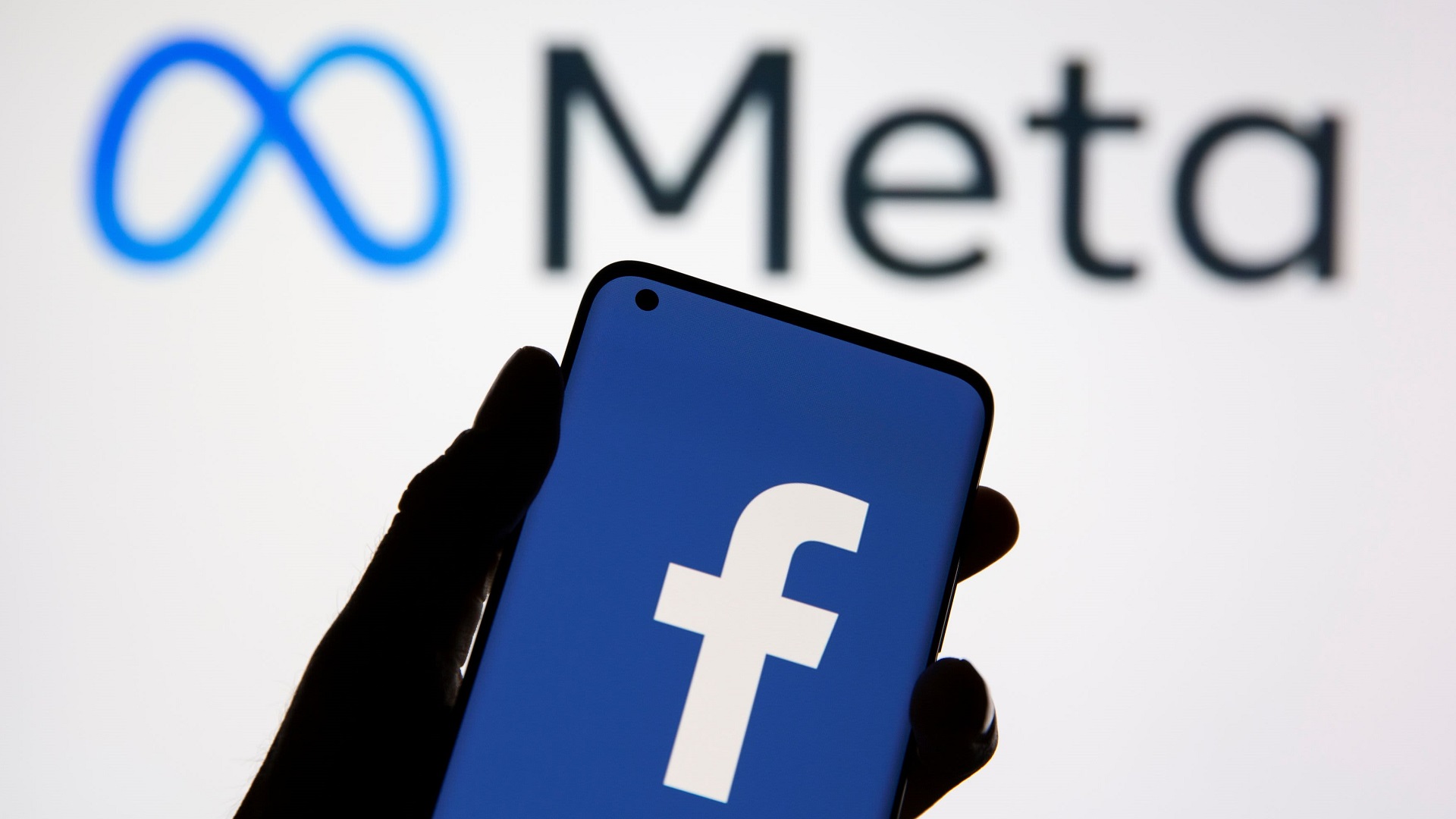Business
Facebook Owner Meta Axes Another 10,000 Jobs Worldwide

On Tuesday, Facebook owner Meta announced a new round of layoffs as part of the company’s “year of efficiency,” as the US tech sector continues to contract due to Biden inflation.
In an email to employees, Mark Zuckerberg stated that Meta would cut 10,000 jobs over the next few months, focusing on middle management, with 5,000 other positions remaining unfilled. The layoffs follow an 11,000-job cuts announced by the company in November.
“This will be difficult, and there is no way around it. It will imply saying farewell to talented and passionate colleagues who have contributed to our success, “According to Zuckerberg.
Meta’s recruitment department will be the first to suffer as the company officially ends the hiring spree that occurred when big tech ramped up operations to meet high demand during the coronavirus pandemic.
The tech and business departments will be affected, and “in a small number of cases, it may take until the end of the year to complete these changes,” according to Mark Zuckerberg.
Zuckerberg warned analysts in January that the company’s “management theme for 2023 is the ‘Year of Efficiency,'” and that he would focus on making the company “a stronger and more nimble organization.”
Meta had a difficult 2022 due to a deteriorating economic climate, which forced advertisers to cut back on marketing, and Apple’s data privacy changes limited ad personalization.
The company is also under fire for betting on the metaverse, a virtual reality world that Meta believes will be the next online frontier.
The company’s share price dropped by an astounding two-thirds in a year due to the problems last year, but the stock recovered in 2023, with investors satisfied by Zuckerberg’s pledge to run a leaner company.
Following the announcement of the latest job cuts, Meta’s stock price increased by 5%.
Meta’s CEO and founder stated that he “will flatten our organization by removing multiple layers of management,” implying that many managers will be ordered to become “individual contributors.”
Zuckerberg said he was pleasantly surprised by the advantages of running a more tightly organized operation where “many things have gone faster” due to eliminating lower priority projects.
“A leaner organization (sic) will complete its highest priorities more quickly. People will be more productive, and their jobs will be more enjoyable and rewarding, “He stated.
 Facebook, Meta Axing Middle Managers a Big Mistake
Facebook, Meta Axing Middle Managers a Big Mistake
Few jobs in corporate America are more thankless — or more mocked — than middle management. They’ve long been derided as petty, powerless, thumb-twiddling bureaucrats who enforce the rules, crack the whip, and stamp out any vestige of creativity or self-initiative. Middle management, so the thinking goes, is for mediocre people.
However, as businesses prepare for tougher times, the assault on middle managers has gained momentum. Mark Zuckerberg is removing layers of management at Meta, demoting many supervisors to the ranks of the supervised. Shopify is also restructuring its corporate hierarchy, resulting in fewer managers. In addition to their supervisory duties, Elon Musk has directed Twitter’s engineering managers to begin writing “a meaningful amount” of code themselves.
CEOs claim they are laying off employees in the name of efficiency. Mark Zuckerberg explained his decision: “I don’t want managers managing managers, managing managers, managing managers, managing managers, managing the people who are doing the work.” His rhetoric is part of a decades-long effort to reduce the number of middlemen in corporate America’s sprawling bureaucracy. Reduce your overhead. Dismantle silos. Remove the red tape. Create a “more fun place to work,” in Zuckerberg’s words. Isn’t it all wonderful?
Except for one thing: Middle managers are the ones who make large organizations function. According to studies, they have a far greater impact on a company’s overall performance than senior executives and a greater impact on the bottom line than the teams they supervise. Businesses are cutting the people they need to weather the economic uncertainty by eliminating middle managers amid an unprecedented shift to hybrid work. They make it more difficult for the remaining managers to succeed. And they’re sending a strong message to talented would-be bosses: Don’t be one.
“You can have a great vision and a great strategy, but if you don’t have managers who create the culture you want to be, none of that stuff will get done,” says Jim Harter, Gallup’s chief scientist for workplace management. “It’ll be all uphill the whole way. Leaders’ jobs are made much easier by effective managers.”
The Big Flattening
There are two archetypes of management structures: hierarchical and flat. Tall organizational trees cascade down ever-descending layers of management in hierarchical organizations. Flat organizations have shorter organizational trees with fewer intermediaries.
Because they must establish a clear chain of command, large corporations tend to be more hierarchical. However, over the last few decades, large corporations have attempted to become flatter — and some, like Zappos, have attempted to do away with hierarchies entirely. According to a study of 300 large corporations, the number of managers layered between CEOs and division heads decreased by more than 25% between 1986 and 1998. Meanwhile, the average number of people reporting directly to the CEO has nearly doubled. The Great Flattening had begun.
The war on middle managers appears to have yielded some of the desired results: According to one study, companies with fewer organizational layers delivered products to customers faster. However, the trend resulted in a culture that dismissed middle managers as useless, despite extensive research showing that the good ones make significant contributions to their organizations.
Consider a series of Gallup studies on employee engagement—a measure of how involved and enthusiastic employees are about their jobs, linked to higher profitability, lower turnover, and lower absenteeism. Across more than 50,000 teams, Gallup’s researchers honed in on a perplexing finding: Even within the same company, some teams performed significantly better in engagement than others. The findings suggested that team-specific dynamics, rather than organizational-wide ones, were key to how employees felt about their jobs.
So the researchers dug even deeper. They were surprised to discover that direct supervisors accounted for 76% of the variation in team engagement, while executives accounted for only 11%. “Your immediate manager has far more influence on your engagement than senior leadership,” Harter says. “It was astonishing how much variation there was across these manager-led teams and how much managers influenced organizational engagement.”
Top executives may be surprised to learn they are worth less than middle managers. However, if you consider your own experience as an employee, it probably makes sense. The person with the greatest impact on your day-to-day work life is not the CEO, who is unlikely to know your existence. Your immediate boss knows to be gentle with you right now because your marriage is crumbling, who tailors their feedback to you in a way that makes you open to change and reshapes assignments from higher-ups to match your strengths and ambitions.
Middle managers, however, underappreciated, frequently make or break how we see and do our jobs. That’s why, according to a recent survey conducted by UKG, a workforce-software provider, employees said their supervisor had just as much of an impact on their mental health as their spouse — and even more than their therapist.
Consider another study that examined middle managers’ impact on business performance. Wharton management professor Ethan Mollick examined two jobs in the gaming industry: designers and producers. Designers are the innovators who create, invent, and build games. Producers are the suits who ensure that projects are completed on time and within budget.
Mollick expected to discover that the innovators’ creative output was more important than the managers’ bureaucratic work. However, the opposite was true: producers accounted for 22% of revenue differences across games, while designers accounted for only 7%. (According to another study, top executives were even less important, accounting for less than 5% of the total.) “High-performing innovators alone are insufficient to generate performance variation,” Mollick concluded. “Rather, individual managers must integrate and coordinate the innovative work of others.”
Managers overseeing managers
It’s a message worth remembering, especially in Silicon Valley, where brilliant coders are worshipped as gods. According to studies, a top programmer can produce as much work as 20 average ones — a statistic that is frequently used to justify paying exorbitant salaries to attract the best engineers. That’s why the tech industry established a separate advancement path for programmers: to provide a way for superstars to earn raises and promotions without becoming managers.
However, by idolizing top performers so much, Silicon Valley devalued the less glamorous role of managers — the people who get the genius coders’ work out into the world. When Elon Musk was asked to name the most “messed up” aspect of Twitter last October, he replied, “There appear to be ten people managing for every one person coding.” Similar disdain can be heard in Zuckerberg’s words. When he mentioned not wanting “managers managing managers,” he left out the most common middle-manager trope: that, unlike employees who are “doing the work,” middle managers aren’t doing anything.
It’s an assumption that an experienced management consultant I spoke with immediately recognized when she accepted a supervisory position at a tech firm. Even though she was in charge of a team, she was told almost immediately that she should spend most of her time working on her projects. Her performance reviews focused on her work rather than her accomplishments as a manager. When she was laid off a few months ago, she wondered if it was because she prioritized developing her team over grinding out her work.
“I believe that spending your time coaching, leading, and developing people is a worthwhile pursuit in and of itself,” she said. “If you want to do those things well, make time for them. People management is a job. But I don’t believe the company’s leadership recognized or valued that. That is not well received in the tech industry.”
People management takes far more time than corporate leaders realize. According to Gallup, the maximum number of direct reports most managers can effectively supervise is ten. Any more than that, according to Harter, it becomes difficult to have meaningful weekly conversations with employees. (At Tesla alone, Musk reportedly has 28 people reporting to him.) Companies like Meta risk burdening their remaining supervisors with teams too large to manage effectively as they shed middle managers. For the time being, the companies may save money on overhead. However, they will struggle with retention and lose revenue in the long run.
Burnout is beginning to show up in the ranks of middle managers. According to the UKG survey, 42% of middle managers are frequently or always stressed, a higher percentage than either frontline workers or C-suite executives. More than half of those polled said they wished they had been warned not to take their current job. That’s because they’re under increasing pressure from their bosses above, who want them to increase productivity while laying off employees, and from their employees below, who are irritated by having to return to work.
Companies would do better by giving middle managers the recognition they deserve and assisting them in becoming more effective in the emerging post-pandemic workplace rather than eliminating them or burdening them with additional work. According to Harter, businesses that unlock the hidden value of middle managers are more likely to weather the current economic turmoil. “It’s something businesses can use, especially in these more difficult times,” he says. “A lot of it will depend on how they upskill managers.”
Business
PepsiCo Reduces Revenue Projections As North American Snacks And Key International Markets Underperform.

(VOR News) – In the third quarter of this year, Pepsi’s net income was $2.93 billion, which is equivalent to $2.13 per share. This was attributed to the company.
This is in stark contrast to net income of $3.09 billion, which is equivalent to $2.24 per share, during the same period in the previous year. The company’s earnings per share were $2.31 when expenses were excluded.
Net sales decreased by 0.6%, totaling $23.32 billion. Organic sales increased by 1.3% during the quarter when the effects of acquisitions, divestitures, and currency changes are excluded.
Pepsi’s beverage sales fell this quarter.
The most recent report indicates that the beverage and food sectors of the organization experienced a 2% decline in volume. Consumers of all income levels are demonstrating a change in their purchasing habits, as indicated by CEOs’ statements from the previous quarter.
Pepsi’s entire volume was adversely affected by the lackluster demand they encountered in North America. An increasing number of Americans are becoming more frugal, reducing the number of snacks they ingest, and reducing the number of times they purchase at convenience stores.
Furthermore, Laguarta observed that the increase in sales was partially attributed to the election that occurred in Mexico during the month of June.
The most significant decrease in volume was experienced by Quaker Foods North America, which was 13%. In December, the company announced its initial recall in response to a potential salmonella infection.
Due to the probability of an illness, the recall was extended in January. Pepsi officially closed a plant that was implicated in the recalls in June, despite the fact that manufacturing had already been halted.
Jamie Caulfield, the Chief Financial Officer of Pepsi and Laguarta, has indicated that the recalls are beginning to have a lessening effect.
Frito-Lay experienced a 1.5% decline in volume in North America. The company has been striving to improve the value it offers to consumers and the accessibility of its snack line, which includes SunChips, Cheetos, and Stacy’s pita chips, in the retail establishments where it is sold.
Despite the fact that the category as a whole has slowed down in comparison to the results of previous years, the level of activity within the division is progressively increasing.
Pepsi executives issued a statement in which they stated that “Salty and savory snacks have underperformed year-to-date after outperforming packaged food categories in previous years.”
Pepsi will spend more on Doritos and Tostitos in the fall and winter before football season.
The company is currently promoting incentive packets for Tostitos and Ruffles, which contain twenty percent more chips than the standard package.
Pepsi is expanding its product line in order to more effectively target individuals who are health-conscious. The business announced its intention to acquire Siete Foods for a total of $1.2 billion approximately one week ago. The restaurant serves Mexican-American cuisine, which is typically modified to meet the dietary needs of a diverse clientele.
The beverage segment of Pepsi in North America experienced a three percent decrease in volume. Despite the fact that the demand for energy drinks, such as Pepsi’s Rockstar, has decreased as a result of consumers visiting convenience stores, the sales of well-known brands such as Gatorade and Pepsi have seen an increase throughout the quarter.
Laguarta expressed his opinion to the analysts during the company’s conference call, asserting, “I am of the opinion that it is a component of the economic cycle that we are currently experiencing, and that it will reverse itself in the future, once consumers feel better.”
Additionally, it has been noted that the food and beverage markets of South Asia, the Middle East, Latin America, and Africa have experienced a decline in sales volume. The company cut its forecast for organic revenue for the entire year on Tuesday due to the business’s second consecutive quarter of lower-than-anticipated sales.
The company’s performance during the quarter was adversely affected by the Quaker Foods North America recalls, the decrease in demand in the United States, and the interruptions that occurred in specific international markets, as per the statements made by Chief Executive Officer Ramon Laguarta.
Pepsi has revised its forecast for organic sales in 2024, shifting from a 4% growth rate to a low single-digit growth rate. The company reiterated its expectation that the core constant currency profitability per share will increase by a minimum of 8% in comparison to the previous year.
The company’s shares declined by less than one percent during premarket trading. The following discrepancies between the company’s report and the projections of Wall Street were identified by LSEG in a survey of analysts:
SOURCE: CNBC
SEE ALSO:
Old National Bank And Infosys Broaden Their Strategic Partnership.
Business
Old National Bank And Infosys Broaden Their Strategic Partnership.

(VOR News) – Old National Bank, a commercial bank with its headquarters in the Midwest, and Infosys, a firm that specializes in information technology, have recently entered into a strategic expansion of their link, which has been in place for the past four years.
This expansion is more likely to take place sooner rather than later, with the likelihood being higher.
For the purpose of making it possible for Old National Bank to make use of the services, solutions, and platforms that are offered by Infosys, the objective of this expansion is to make it possible for the bank to transform its operations and processes through the application of automation and GenAI, as well as to change significant business areas.
This lets the bank leverage Infosys’ services, solutions, and platforms.
Old National Bank Chairman and CEO Jim Ryan said, “At Old National, we are committed to creating exceptional experiences for both our customers and our fellow employees.”
This statement is applicable to Old National Bank. Infosys is carefully managing the business process innovations that it is putting us through, putting a strong emphasis on efficiency and value growth throughout the process to ensure that it is carried out efficiently.
This is a routine occurrence throughout the entire operation. Because of Infosys’ dedication to our development and success, we are incredibly appreciative of the assistance they have provided.
Old National has been receiving assistance from Infosys in the process of updating its digital environment since the year 2020, according to the aforementioned company.
Ever since that time, the company has been providing assistance. The provision of this assistance has been accomplished through the utilization of a model that is not only powerful but also capable of functioning on its own power.
Infosys currently ranks Old National thirty-first out of the top thirty US banks.
This ranking is based on the fact that Old National is the nation’s largest banking corporation.
It is estimated that the total value of the company’s assets is approximately fifty-three billion dollars, while the assets that are currently being managed by the organization are valued at thirty billion dollars.
Dennis Gada, the Executive Vice President and Global Head of Banking and Financial Services, stated that “Old National Bank and Infosys possess a robust cultural and strategic alignment in the development, management, and enhancement of enterprise-scale solutions to transform the bank’s operations and facilitate growth.”
This remark referenced the exceptional cultural and strategic synergy between the two organizations. Dennis Gada is the one who asserted this claim. This was articulated explicitly concerning the exceptional cultural congruence and strategy alignment of the two organizations.
We are pleased to announce that the implementation of Infosys Topaz will substantially expedite the transformation of Old National Bank’s business processes and customer service protocols. We are exceedingly enthusiastic about this matter. We are quite thrilled about this specific component of the scenario.
Medium-sized banks operating regionally will continue to benefit from our substantial expertise in the sector, technology, and operations. This specific market segment of Infosys will persist in benefiting from our extensive experience. This phenomenon will enable this market sector to sustain substantial growth and efficiency benefits.
SOURCE: THBL
SEE ALSO:
American Water, The Largest Water Utility In US, Is Targeted By A Cyberattack
States Sue TikTok, Claiming Its Platform Is Addictive And Harms The Mental Health Of Children
Qantas Airways Apologizes After R-Rated Film Reportedly Airs On Every Screen During Flight
Business
American Water, The Largest Water Utility In US, Is Targeted By A Cyberattack

The largest regulated water and wastewater utility company in the United States stated Monday that it had been the target of a cyberattack, forcing the company to halt invoicing to consumers.
American Water, The Largest Water Utility In US, Is Targeted By A Cyberattack
American Water, based in New Jersey and serving over 14 million people in 14 states and 18 military facilities, said it learned of the unauthorized activity on Thursday and quickly took precautions, including shutting down certain systems. The business does not believe the attack had an impact on its facilities or operations and said employees were working “around the clock” to determine the origin and scale of the attack.

According to their website, American Water operates over 500 water and wastewater systems in around 1,700 communities across California, Georgia, Hawaii, Illinois, Indiana, Iowa, Kentucky, Maryland, Missouri, New Jersey, Pennsylvania, Tennessee, Virginia, and West Virginia.
SOURCE | AP
-

 News3 years ago
News3 years agoLet’s Know About Ultra High Net Worth Individual
-
Entertainment2 years ago
Mabelle Prior: The Voice of Hope, Resilience, and Diversity Inspiring Generations
-

 Health3 years ago
Health3 years agoHow Much Ivermectin Should You Take?
-

 Tech2 years ago
Tech2 years agoTop Forex Brokers of 2023: Reviews and Analysis for Successful Trading
-

 Lifestyles2 years ago
Lifestyles2 years agoAries Soulmate Signs
-

 Movies2 years ago
Movies2 years agoWhat Should I Do If Disney Plus Keeps Logging Me Out of TV?
-

 Health3 years ago
Health3 years agoCan I Buy Ivermectin Without A Prescription in the USA?
-

 Learning2 years ago
Learning2 years agoVirtual Numbers: What Are They For?

